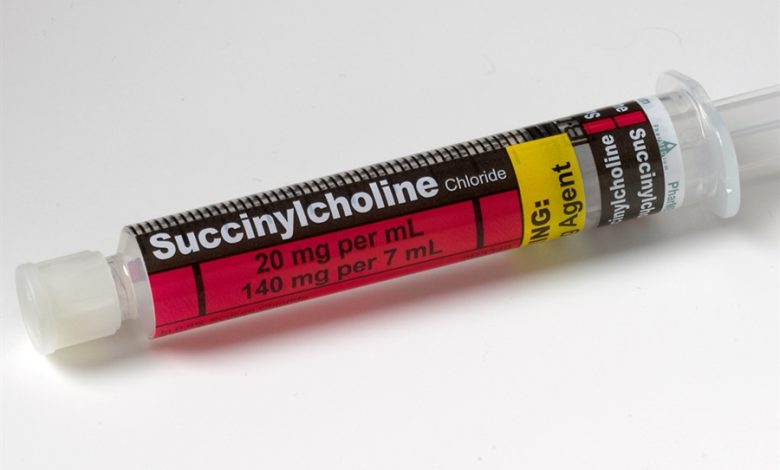Drugs That Cause Malignant Hyperthermia

Malignant hyperthermia (MH) is a rare but potentially life-threatening condition that can occur in response to certain drugs used during general anesthesia. Malignant hyperthermia is an inherited disorder that affects the skeletal muscle cells and causes them to contract uncontrollably. This can lead to a rapid rise in body temperature, muscle rigidity, and other symptoms that can be fatal if not treated promptly. The first recorded case of malignant hyperthermia was reported in 1960 by a team of anesthesiologists who observed a cluster of patients who experienced a sudden and severe reaction to anesthesia during surgery.
Over the next few decades, researchers continued to investigate the genetic and physiological factors underlying malignant hyperthermia. In the 1980s, a genetic mutation was identified in the ryanodine receptor gene, which is responsible for regulating calcium levels in muscle cells. This mutation was found to be present in a large proportion of individuals with malignant hyperthermia, providing important insights into the condition’s genetic basis.
Since then, advances in genetics and molecular biology have led to a better understanding of the underlying mechanisms of malignant hyperthermia and the development of new diagnostic tools and treatments. Today, malignant hyperthermia is a rare but well-recognized condition that can be effectively managed with appropriate precautions and interventions during anesthesia.
Malignant Hyperthermia is estimated to occur in approximately 1 in 5,000 to 1 in 100,000 general anesthesia cases. However, the incidence may be higher in certain populations such as those with a family history of malignant hyperthermia or certain genetic mutations associated with malignant hyperthermia susceptibility. It is important for healthcare professionals to be aware of the signs and symptoms of malignant hyperthermia and to have appropriate protocols in place to manage it in the event that it occurs.
What Are The Symptoms Of Malignant Hyperthermia?
The symptoms of malignant hyperthermia typically occur during or shortly after exposure to triggering agents and can include:
1. High fever: Body temperature may increase rapidly, sometimes to above 104°F (40°C).
2. Muscle rigidity: Muscles throughout the body may become stiff and difficult to move.
3. Rapid heart rate: The heart may beat faster than usual.
4. Rapid breathing: Breathing may become rapid or shallow.
5. Sweating: The skin may become moist or wet due to excessive sweating.
6. Low blood pressure: Blood pressure may drop, leading to dizziness or lightheadedness.
7. Dark urine: Urine may become dark in color, indicating potential kidney damage.
8. Abnormal heart rhythm: The heart may develop an irregular rhythm or even stop beating.
9. Unconsciousness: In severe cases, the person may lose consciousness.
It is important to note that not all people who are exposed to triggering agents will develop, and some people may be more susceptible than others due to genetic factors. It is important to discuss any concerns about malignant hyperthermia with your healthcare provider prior to undergoing any medical procedures that may involve anesthesia.
Drugs That Cause Malignant Hyperthermia
The following is a list of drugs that can trigger malignant hyperthermia:
1. Succinylcholine: This medication is used as a muscle relaxant to facilitate endotracheal intubation during surgery. It works by causing the muscles to contract and then relax. In individuals who are susceptible to malignant hyperthermia, succinylcholine can cause a rapid and sustained muscle contraction that can lead to a release of calcium from the muscle cells, triggering a cascade of events that can result in malignant hyperthermia.
2. Inhalational anesthetics: These medications are used to induce and maintain general anesthesia during surgery. They include halothane, isoflurane, desflurane, sevoflurane, and enflurane. In susceptible individuals, these drugs can cause a release of calcium from the muscle cells, leading to muscle contractions and the development of malignant hyperthermia.
3. Intravenous anesthetics: These medications are used to induce and maintain general anesthesia during surgery. They include propofol and etomidate. In susceptible individuals, these drugs can also cause a release of calcium from the muscle cells and trigger malignant hyperthermia.
4. Local anesthetics: These medications are used to numb a specific area of the body during surgery or other medical procedures. They include lidocaine, bupivacaine, and ropivacaine. While the risk of malignant hyperthermia with these drugs is lower than with general anesthesia, they can still trigger the condition in susceptible individuals.
The drug that is most commonly implicated in Malignant Hyperthermia is the general anesthetic agent, succinylcholine. It is a muscle relaxant that is used to facilitate endotracheal intubation during surgery. The use of volatile anesthetics like halothane, sevoflurane, isoflurane, and desflurane can also trigger MH in susceptible individuals.
It’s important to note that not everyone who is exposed to these drugs will develop malignant hyperthermia. In addition, there are many other factors that can contribute to the development of the condition, including underlying medical conditions, genetics, and environmental factors. If you are concerned about your risk of developing malignant hyperthermia, it’s important to discuss your medical history and any potential risk factors with your healthcare provider.
How Is Malignant Hyperthermia Managed?
Malignant hyperthermia is a medical emergency that requires prompt recognition and treatment to prevent serious complications and death. The management of malignant hyperthermia involves several steps, including:
1. Stopping the Triggering Agent: The first step in managing malignant hyperthermia is to identify and stop the triggering agent, which is typically a specific type of anesthetic agent (e.g. halothane, sevoflurane). The triggering agent is discontinued immediately, and the patient is usually switched to an alternative anesthetic agent that is not associated with malignant hyperthermia.
2. Providing Supportive Care: Supportive care is critical in the management of malignant hyperthermia. The patient’s vital signs, including heart rate, blood pressure, and oxygen saturation, are monitored closely. IV fluids are administered to prevent dehydration and electrolyte imbalances. Cooling measures, such as cold IV fluids, ice packs, and a cooling blanket, may be used to lower the patient’s body temperature.
3. Administering Dantrolene: Dantrolene is a specific medication used to treat malignant hyperthermia. It works by blocking the release of calcium from the skeletal muscles, which helps to prevent further muscle damage and reduce the high fever associated with malignant hyperthermia. Dantrolene is administered as soon as possible, and the dosage is titrated based on the patient’s response to the medication.
4. Correcting Acidosis: malignant hyperthermia can cause metabolic acidosis, a condition in which the body produces too much acid or cannot eliminate acid fast enough. This can be corrected by administering IV fluids and sodium bicarbonate.
5. Monitoring for Complications: Patients with malignant hyperthermia are at risk for several complications, including renal failure, disseminated intravascular coagulation, and cardiac arrest. The patient’s condition is monitored closely, and appropriate interventions are taken to prevent or manage complications.
Overall, the management of malignant hyperthermia requires a coordinated effort among an experienced medical team, including anesthesiologists, critical care physicians, and other specialists. Prompt recognition and treatment of malignant hyperthermia can improve the patient’s prognosis and reduce the risk of serious complications.
How to Prevent Malignant Hyperthermia
The best way to prevent malignant hyperthermia is to identify individuals who are at increased risk of developing the condition and avoid using triggering agents during anesthesia or surgery. The following measures can help prevent malignant hyperthermia:
1. Family history: Individuals with a personal or family history of malignant hyperthermia or related disorders should inform their healthcare provider before undergoing anesthesia or surgery.
2. Genetic testing: Genetic testing can identify individuals with a higher risk of developing malignant hyperthermia due to mutations in specific genes.
3. Anesthetic history: Individuals who have had a previous reaction to anesthesia or surgery, especially if it involved malignant hyperthermia, should inform their healthcare provider.
4. Avoiding triggering agents: Certain medications, including succinylcholine and inhalational anesthetics, can trigger malignant hyperthermia in susceptible individuals. Alternative medications should be used in these cases.
5. Monitoring during surgery: During surgery, vital signs including temperature, heart rate, and breathing should be closely monitored. If signs of malignant hyperthermia are detected, immediate treatment should be initiated.
6. Education and training: Healthcare providers should be educated on the signs and symptoms of malignant hyperthermia and trained on appropriate protocols for managing the condition.
It is important to note that even with these preventive measures in place, malignant hyperthermia can still occur in rare cases. Prompt recognition and treatment can improve outcomes and reduce the risk of complications.





